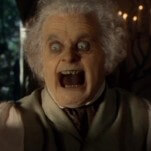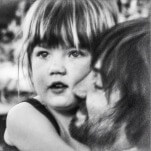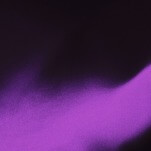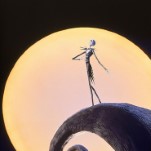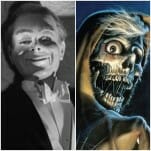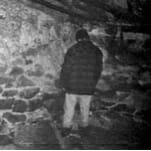Apple TV+’s Melodramatic Lady in the Lake Sinks Under the Weight of Its Own Heavy-Handedness
Photo Courtesy of Apple TV+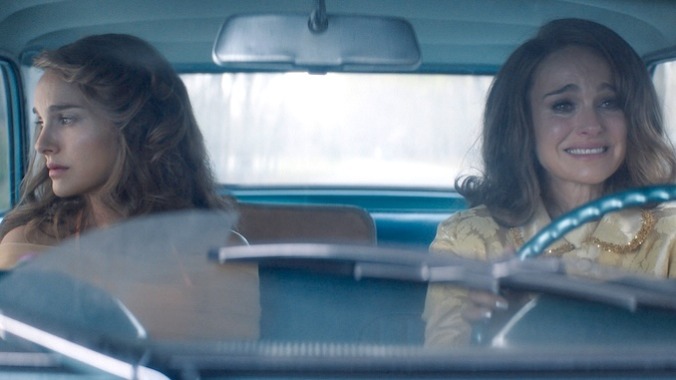
On paper, Lady in the Lake sounds like everything you (or, at least, I) could want in a female-centered murder mystery: complicated women with complicated dynamics, political commentary (on gender, race, religion, class, and more), a dollop of surrealism and some experimentation with form, and a story less about the mystery itself and more about how the obsession with it affects those involved. Perhaps that’s why, once the credits for the first episode of the Apple TV+ series began to roll, I found myself thinking “there is a great show in here somewhere, I’m just not sure if the Lady in the Lake can find it.” And after finishing all seven episodes, I regret to inform you that it could not.
Starring Natalie Portman as Jewish housewife and wannabe investigative journalist Maddie Schwartz and Moses Ingram as struggling Black working mother and ill-fated political idealist Cleo Johnson, Lady in the Lake unfortunately leaves much to be desired. Narrative airtime is split between Maddie and Cleo and their respective lives, and occasionally how their stories intersect. Set in the grit of 1960s Baltimore, creator Alma Har’el’s adaptation of Laura Lippman’s 2019 bestseller revolves around two unsolved (and, yes, lady and lake related) murders, and one woman’s burning desire to solve them both. After a young Jewish girl, Tessie Durst, goes missing during a Thanksgiving Day parade, Maddie can’t help but neglect her “wifely duties” (as her stereotypically awful husband and son would call it) in favor of searching for her neighbor’s daughter. As the case unfolds—and when a new one crops up—Maddie’s life unravels as she devotes every waking moment to achieving justice for these horrific deaths (or, perhaps, to achieving her own journalistic goals in the process). Cleo’s story is told simultaneously, often starkly juxtaposed with Maddie’s far wealthier life, as we watch her head blindly towards what is, as her voiceover immediately informs us at the show’s start, already set in stone as her tragic fate.
However, the case at the series’ center is far less compelling than the show itself seems to believe (especially because it becomes a little obvious who did what remarkably quickly)—if Har’el’s intent was to create an edge-of-your-seat psychological thriller and murder mystery, to make viewers hold their breath as they wait for the next clue to drop, I would be very hesitant to label it as a success. But, luckily, that doesn’t seem to be Lady in the Lake’s primary goal: instead, the mystery serves as a vehicle for an artistic, and often surreal, character study steeped in social commentary on intersectionality and the perils of faux allyship. Or, at least, that’s what it tried to do; in reality, I would be very hesitant to label the show a success on that front, either.
Frustrating at best, Lady in the Lake is not particularly good, but more than that, it’s grating. The Apple TV+ series is obsessed with painting a very of-the-moment portrait of intersectional oppression, but its strokes are far too broad and its hand far too heavy. The mystery often falls by the wayside to make room for further exploration of Maddie’s Jewishness, Cleo’s Blackness, and their identities as women, and how all three frame their lives in the 1960s—and while I’m normally all for sidelining plot in favor of deepening characterization and critique, the longer Lady in the Lake goes on, the more evident it is how little it truly has to say about these otherwise crucial topics. Perhaps the series would feel meaningful and necessary if it were the first to ever address the woes of being a housewife in a sexist society, or the pervasive classism and racism of postwar America, but it’s not (although it sometimes feels as if the series thinks it actually is). Each of the seven episodes are chock-full of cartoonishly blatant depictions of sexism, racism, and antisemitism, giving the impression that the creators were more dedicated to churning out those moments than saying anything original or interesting about them. Broad and painfully unsubtle, the show’s characterizations of Black and Jewish culture during the era are so ridden with overly familiar tropes that it’s difficult to dig through the cliches to find any substance underneath.
Lady in the Lake often feels like it doesn’t trust either its audience, itself, or both, to put together the pieces already laid down—not only of the mystery, but even of the characters and the world in which they live. In case you forget Maddie is Jewish and that people were casually antisemitic in the ‘60s, don’t worry; the first words of every conversation she’s involved in tend to be along the lines of “Schwartz? Huh, I didn’t know you were Jewish! Your nose isn’t big!” (There’s also Portman’s off-key “Jewish accent” and the picture of, you guessed it, Anne Frank hung on the wall of Maddie’s cubicle for good measure.) In case you forget she’s a woman and that sexism existed in the ‘60s, don’t worry; every man in her office slaps her ass as she walks by and there are multiple characters who exist only to tell her “you can’t do that, you’re a woman!” Forget that this is the 1960s? Don’t worry, a little boy will soon ride by on a bicycle hawking “revolutionary strawberries fresher than Martin Luther King” (which, like, what?). Forget that there are Black people in the ‘60s and also racism? Don’t worry, that’s where Moses Ingram’s Cleo comes in (and while her half of the story is less unbearable than Maddie’s, that doesn’t mean it’s good). I have never seen a series so desperately in need of a lighter touch. Its depictions of discrimination felt almost parodic—not because they were excessively cruel, far from it, but because they just felt silly, over-obvious, and redundant. Rather than address the subtleties of discrimination and the systemic forces breeding it as well as stereotypical, blatant forms of oppression, Lady in the Lake just hits you over the head with the latter again and again until you practically feel concussed.
The concept of the series is not a bad one: a white, Jewish, upper-class woman fervently searches for answers to a Black woman’s sudden disappearance, but is she actually doing this to help the woman in question? Or, deep down, is she only interested in helping herself? Where’s the line between allyship and exploitation? Perhaps these would be fascinating questions. The problem is that we are never allowed to happen upon them ourselves, to let these ethical quandaries rise naturally and percolate over time. Instead, nearly every character in the series’ later episodes accuse Maddie of exactly that point-blank, leaving little room for discussion.
It also does not particularly help that Portman’s somewhat stilted, often ham-fisted performance does not especially sell the character’s inner life and complex motivations, or even her oft-referenced frenzied drive. Portman’s Maddie instead has the personality of a piece of cardboard that someone wrote “AMBITIOUS” on in block letters; I say this because her primary character trait is evidently her ambition, and not because she actually comes across as ambitious, per se. Instead, about a fourth of the script is Maddie insisting upon her own ambition, and another fourth is the characters around her reprimanding her for it. To be frank, it gets old fast. So, too, does the peanut gallery surrounding her; all the tropey hits are there, from the Excessively Sexist Husband Who Tells Her To Make That Brisket Already, Dammit! to the Unnaturally Misanthropic, Hate-Filled Son Who Refuses To Call Her Mom to the Inexplicably Befriended Weird Teen Girl Who Has No Narrative Purpose Except For Making The Uptight Protagonist Smoke A Joint One Time. It’s baffling how much the characters feel like parodies of themselves, considering how seriously the show takes itself.
-

-

-

-

-

-

-

-

-

-

-

-

-

-

-

-

-

-

-

-

-

-

-

-

-

-

-

-

-

-

-

-

-

-

-

-

-

-

-

-

